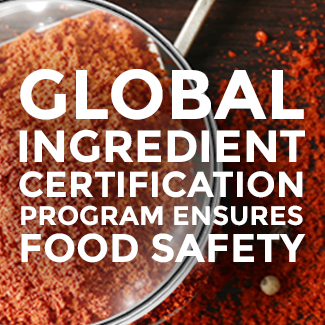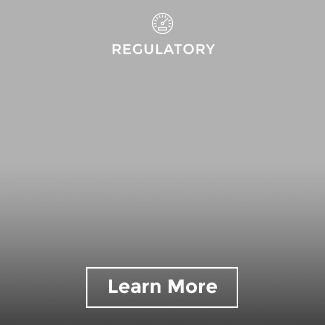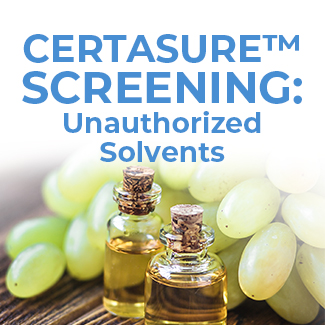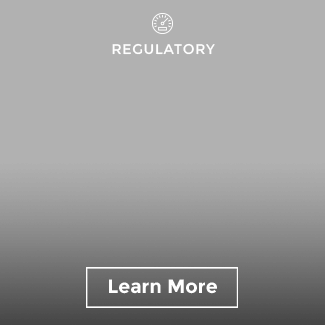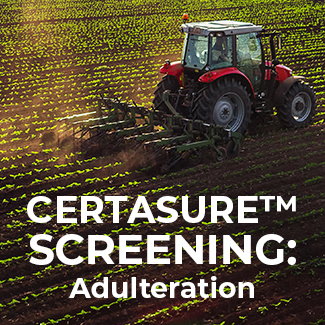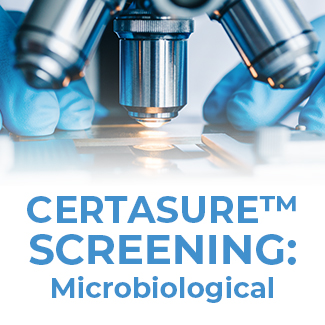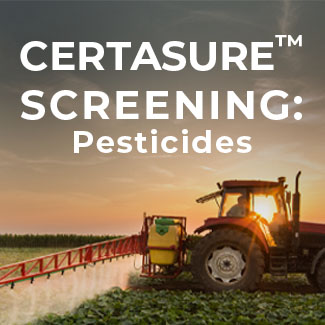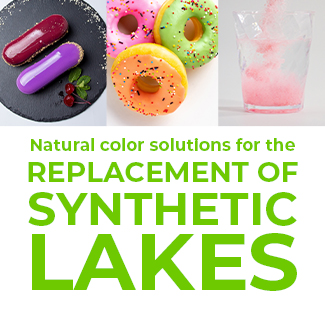Certasure™ Screening: Heavy Metals
Food Safety is Our Priority
Botanical colorants have an inherent risk due to the nature of crops. Because plants pull nutrients from the air, water, and soil they grow in, contaminants such as heavy metals can be absorbed throughout the growing process. While FD&C Food Colors are rigorously tested by the FDA, the same type of regulatory oversight simply does not exist for food colors from botanical sources, and inherently, natural food colors pose higher risks. For example, the FDA has very clear specifications for the levels of heavy metals like lead, arsenic, and cadmium, etc. permitted in synthetic food colors, and every batch of synthetic color must meet these heavy metal specifications in order to become a Certified Food Color (FD&C). However, that same type of certification process and screening for heavy metals does not exist for food colors from botanical sources.
Sensient’s response to the lack of standards is Certasure™ –an integrated food safety program for colors from plant sources that combines a comprehensive vendor certification, best manufacturing practices, full raw material traceability and the most stringent testing protocols. There are five major screening protocols which create the foundation of Sensient’s commitment to food safety across the following risk metrics:
This blog is part of a series exploring each testing protocol of Certasure™ :
What we test for, why we do it, and how it works. For more information on a different screening process, click an icon above!
THE HEAVY METALS SCREENING PROCESS
The Reason for Heavy Metals Screening
Botanical crops grown for color and natural ingredients can absorb heavy metals through the air, water, and/or soil. Several years ago, six suppliers had to recall turmeric for high lead content, and recently, Sensient failed a shipment of xanthan gum, a raw material used in natural color solutions, after finding high levels of lead present. Recalls, like the turmeric example, indicate companies are not doing the appropriate testing for heavy metal compliance according to regulatory guidance.
While navigating regulatory waters can be complex, Sensient is here to help guide you through those complexities. Additionally, there are regional regulatory bodies around the world that have issued systematic guidance levels for heavy metal permittance as a testing protocol roadmap for the following metals: Arsenic, Cadmium, Lead, and Mercury.
WE MEASURE ALL INCOMING RAW MATERIALS TO THE STRICTEST LEVEL PERMITTED BY ANY OF THESE MAJOR BODIES.
 USA:FDA 21CFR USA:FDA 21CFR |
 CANADA: HC CANADA: HC |
 EU: EC 231/2012 EU: EC 231/2012 |
 WHO: JECFA WHO: JECFA |
 JAPAN: JFSA JAPAN: JFSA |
 CHINA: GB CHINA: GB |
|
|---|---|---|---|---|---|---|
| MERCURY | <1 PPM | NOT REQUIRED | <1 PPM | <1 PPM | NOT REQUIRED | <1 PPM |
| ARSENIC | <3 PPM | <3 PPM | <3 PPM | NOT REQUIRED | <2 PPM | <1 PPM |
| LEAD | <10 PPM | <10 PPM | <2 PPM | <2 PPM | <2 PPM | <10 PPM |
| CADMIUM | NOT REQUIRED | NOT REQUIRED | <1 PPM | NOT REQUIRED | NOT REQUIRED | NOT REQUIRED |
| TOTAL HEAVY METALS | NOT REQUIRED | <40 PPM | <40 PPM | <40 PPM | <20 PPM | <20 PPM |
While these regulatory bodies all issue guidance, it’s up to ingredient suppliers to test for the appropriate levels of heavy metals in raw materials. We encourage all food, pet, and beverage manufacturers and developers to confirm these types of testing protocols are being conducted on their botanical ingredients like natural food colors.
This global perspective ensures that our colors are safe across all metrics.

How we do it:
Inductively Coupled Plasma (ICP) Atomic Emission Spectroscopy
Sensient’s chemists test three separate samples of each botanical raw material using an ICP, a specialized analytical instrument that measures electromagnetic radiation at wavelengths characteristic of particular elements—in this case, heavy metals.
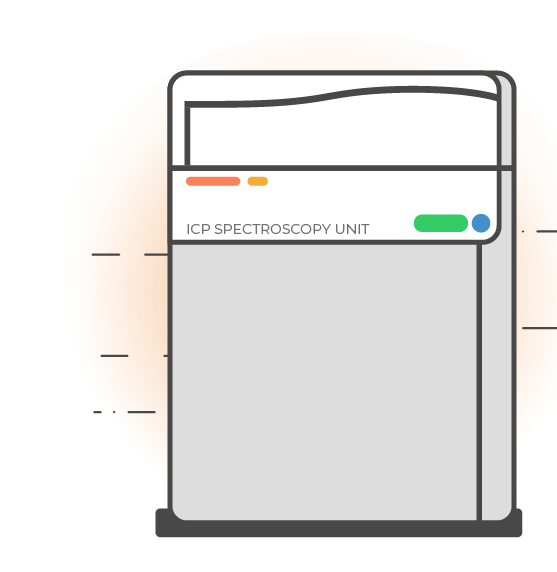
The Certasure™ Promise Protects Manufacturers AND Consumers
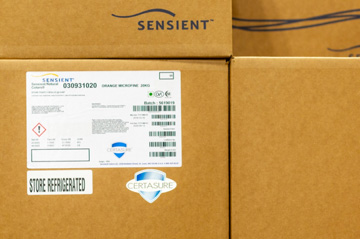
Food safety is of the utmost importance to us, and we know it’s important to our customers as well. We monitor all incoming raw materials for the presence of heavy metals.
When a material fails our screening process, botanical lots often go back out on the market, so we hope other natural food suppliers have implemented the same types of preventive measures to provide peace of mind for manufacturers and consumers alike.
When you receive natural food colors from Sensient, the Certasure™ shield is placed on every shipment as a reminder of our guarantee of safe, quality, and authentic botanical food colors.
If you have any questions about our heavy metals screening process or our natural food colors, feel free to schedule a consultation.
If you’re ready to be absolutely confident in the safety and quality of your natural colors, request any shade from our rainbow today!








